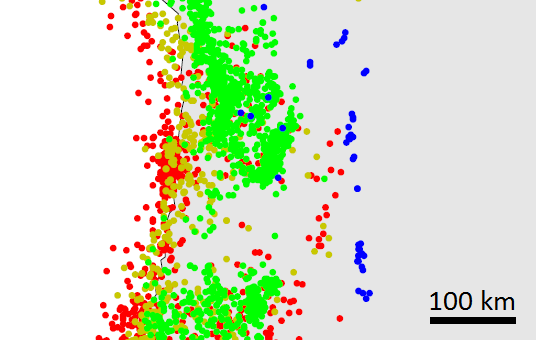88 Summary — Physical Geology – 2nd Edition

Figure A
- Draw a line on the map to show approximately where the plate boundary is situated.
- In which directions are the plates moving, and where in the world might this be?
- Earthquakes are relatively common along the mid-ocean ridges. At what type of plate boundary do most such quakes occur?
- The northward motion of the Pacific Plate relative to the North America Plate takes place along two major transform faults. What are they called?
- Why is earthquake damage likely to be more severe for buildings built on unconsolidated sediments as opposed to solid rock?
- Why are fires common during earthquakes?
- What type of earthquake is likely to lead to a tsunami?
- What did we learn about earthquake prediction from the 2004 Parkfield earthquake?
- What are some of the things we should know about an area in order to help minimize the impacts of an earthquake?
- What is the difference between earthquake prediction and forecasting?
Answers to Review Questions can be found in Appendix 2.
Media Attributions
- Figure A: © Steven Earle. CC BY.

